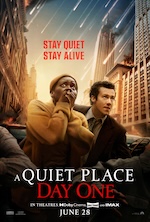This summer, when I haven’t been handed unhappy distractions, I’ve been working on a new course for the fall. I’m looking forward to it; it’s about the history and science of evolution, but it’s shaped by the requirement that courses in its category are equally focused on developing the discipline of writing in our students, so it’s going to be a combination of me lecturing briefly on the history of evolutionary theory, students discussing what they understand, writing exercises, and students explaining back to each other and me with essays. It’s not just a STEM course, it’s a STEAM course where the liberal arts pedagogy is folded into science content, and it’s all built around an epistemological approach to understanding where our ideas come from.
And now Angela Collier puts out a video about STEAM. It’s very good, especially since the last half or so is about how conservatives are openly trying to destroy progressive education and return us to the era of authoritarian instruction, where it’s so much easier to insert propaganda and lies into the curriculum. “Memorize this” is a much more useful tool for authoritarians than “question everything”, and it also would demolish good education.
This is not.a new problem. It’s clearly an issue since Reagan, the creature who corrupted everying about America, or at least, interpreted all the pustules of corruption as fashionable beauty marks for the fash.







